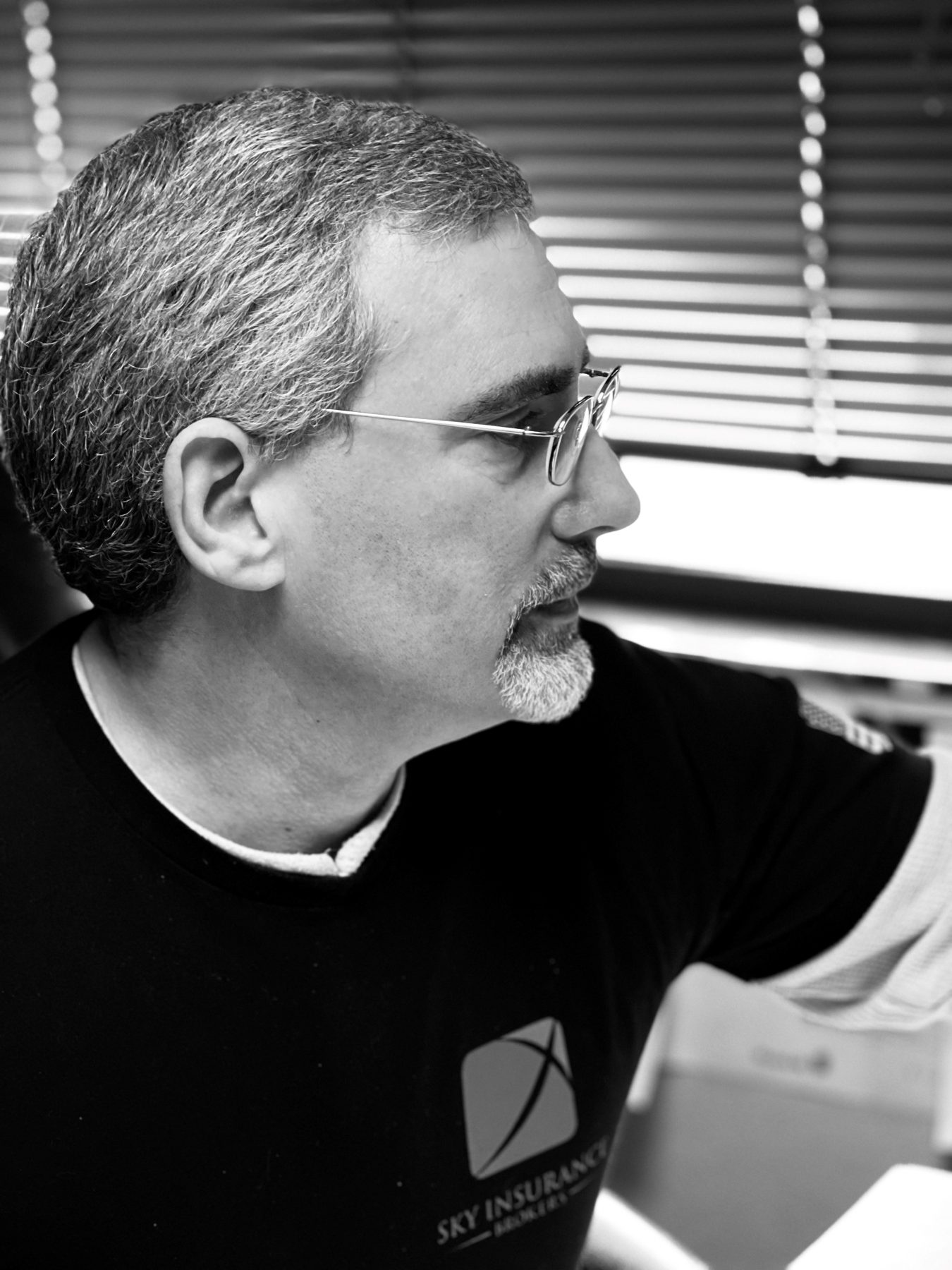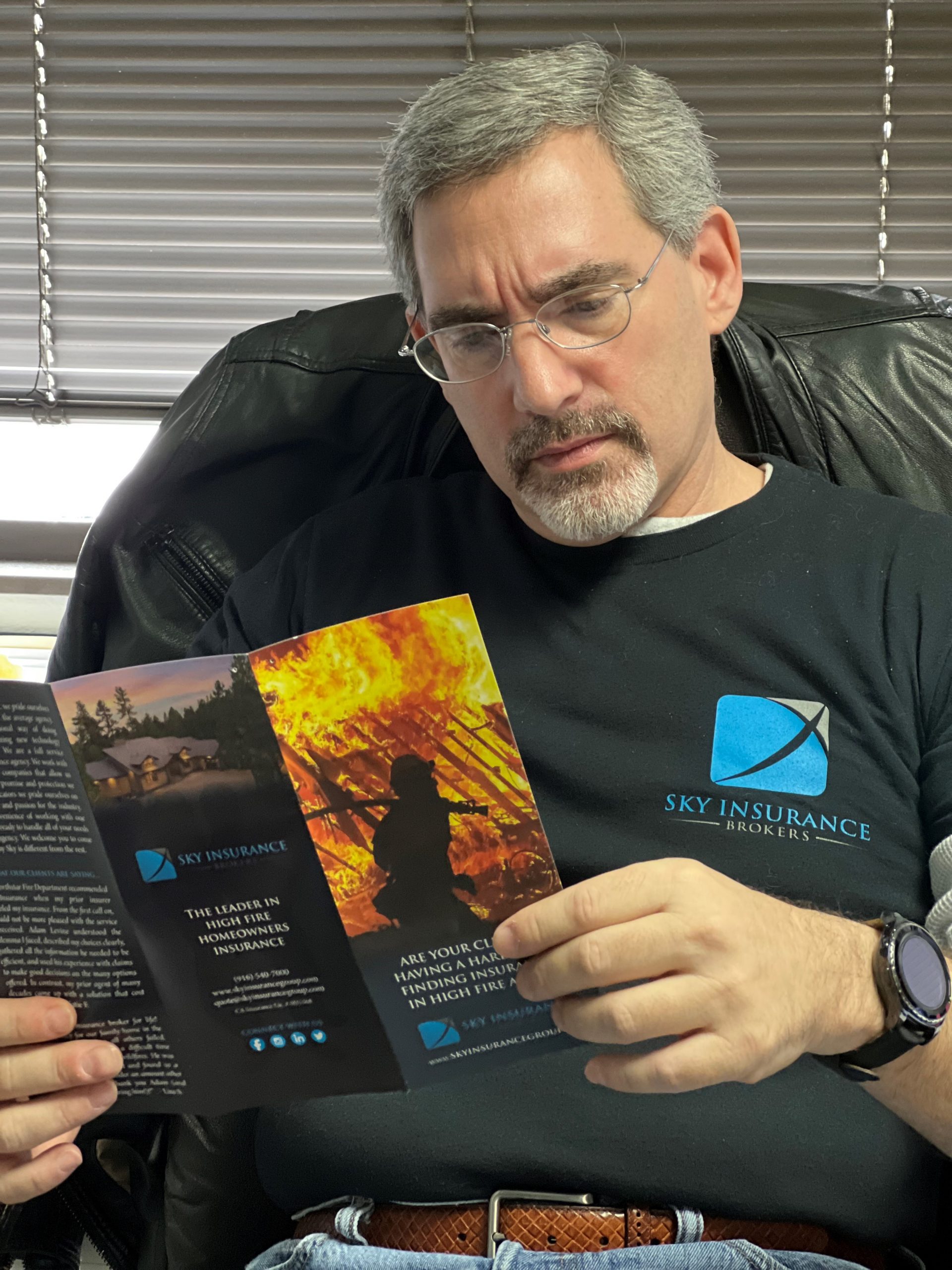I’m often asked, “Why is it so hard to find affordable insurance for my area”?
Many clients remember when their home was insured with a standard carrier for less than $1,000/year. Regularly, I have clients call me to shop for better insurance rates because the carrier they’ve had for 20 years increased their premium by 400-500%. I have experienced the same phenomenon myself. I originally purchased my home (“brand-new”) in 1999, and the insurance was about $1100/year. Although I’ve never had a claim and reside in a tract home community, my premium over the last five years has steadily increased to its current amount of almost $3800. The costs from claims due to wildfire have been the driving force of increased premiums for all homeowners.
According to the Insurance Information Institution, “From 2011 to 2020, there were an average of 62,805 wildfires annually and an average of 7.5 million acres impacted. In 2020, 58,950 wildfires burned 10.1 million acres, the second-most acreage impacted in a year since 1960; nearly 40% of these acres were in California“.

Our state has been burning for as long as I can remember. We live in “hell on earth,” but with beaches. In fact, wildfires have surpassed earthquakes as more concerning to most Californians. Historically, the state has thousands of fires every year during “fire season” (generally, from June to October). In 2020, 9,917 fires were burning approximately 4.3 million acres. To date (2021), we’ve had approximately 8,619 fires, burning 2.5 million acres. According to Cal Fire, the 5-year average has been 5,791 fires in the state.
Suppose you live in California (especially in rural or foothill communities). In that case, you find yourself fixed to Cal Fire’s website, monitoring the most recent active fire and its proximity to yourself and those you love. It’s become part of life in California, especially in the last five years or so. Every year, I monitor the state’s active fires daily, and I do so as a resident of a “high-fire” community, not just as an insurance agent.
So, why are we always on fire? What’s the cause? Predominately, the cause of wildfires is humans, and we cause 9 out of 10 fires. Notwithstanding arson-related fires, if you live in rural communities, you’re always trying to mitigate the potential damage of fire on your property. In a twisted sort of “Catch-22”, we use our weedwhackers, chainsaws, and lawnmowers to manage the potential fuels. With the droughts we have, invasive grasses, and strong valley winds, all it takes is a spark from one of the very machines we use for prevention to ignite the fire-ready materials.
Other states have natural disasters too. What happened to insurance in California?
In Texas, they have tornadoes. Florida has hurricane issues. California has fire disasters. Each state has its problems that make insurance underwriters wary. Despite the state’s fire suppression and mitigation efforts, billions of dollars are lost annually due to wildfire. All national carriers who sold their insurance products in California suffered losses in the last 5-10 years that have the potential of crippling their companies permanently. They’ve increased premiums to “keep the lights on,” not expecting to get out of the red for about a decade. These carriers are more concerned about keeping their 50+-year-old companies from becoming insolvent. From a business standpoint, I get it. After all, these companies need to make sure they can survive the losses and stay in business. So, they’ve increased premiums and cut off business in the higher risks for now. For instance, carriers took a severe hit with the Camp/Paradise Fire in 2018. They are collectively resolving $34 Billion in claims (and counting) for the approximate 21,000 dwellings and businesses lost. As a result, many carriers decided they wanted less risk in “high fire” areas until they recovered from those losses.
As a consumer, I have the same emotional response as everyone else. Since I live in the foothills (El Dorado County), I also ask, “why are they picking on me”? I’ve never had a claim and live in a regular tract home. Although my house is “hardened” (concrete roof, stucco siding, vent covers, etc.), my insurance has tripled. I have a hydrant in the front yard, and the fire station is ½ mile away. So, why do I have to pay more? It’s not my family submitting a claim! Insurance carriers suffered extreme losses in California, with some of the worst seasons in history occurring in the last five years. Like any business with a poor annual return, insurance carriers needed to increase the cost of their product and pass on that increase to all its consumers.
So, how do companies decide who pays higher premiums or who will be dropped?
Because carriers are more selective, they’re using different risk management tools than ever before. It helps them decide what they want to keep and which current policies should incur premium increases. Carriers also have to weigh the policies they lose, with extreme selectivity for “new business.” More than ever, the carrier’s underwriting has become very important. I remember when underwriters had more discretion on what was acceptable for them. Having a good relationship with underwriters was the best thing to have as an insurance agent. It allowed me to “present my case” and possibly convince one person to write a policy that might have had questionable eligibility to another underwriter in the same company. Every carrier has a hard line in the sand regarding their guidelines, and underwriters have very little discretion to exceed the (often very strict) company guidelines.
Underwriting is all about risk tolerance with each carrier and how many policies they have in a given area. If an individual carrier feels they’ve hit the maximum number of active policies that they can tolerate/survive (should they all be lost from a wildfire, for example), they “shut down” new business in that area due to “Saturation.” Think of a map of your area. Then, visualize a red dot sticker on every address representing active policies by a given carrier. When the map looks like it has chickenpox, the carrier says, “enough” and shuts down new business in that area. They’ve decided that their cup is full and don’t want to add more. Some carriers have even dumped out some of the risks in their cup in the form of non-renewals for some of their policyholders.
All carriers who do business in California have engaged in risk management. They’ve either stopped taking on the new business altogether in certain areas or are very selective. Many carriers changed their underwriting guidelines to ensure they don’t take new business that’s considered “high risk.” Specifically, carriers make eligibility decisions and rely on different scoring systems to assist them in their determination. The most prevalent scoring systems carriers use are Brush Score (“Fireline”) and Wildfire Score. For instance, a carrier who relies on Brush Scoring might not want any new business with a score above a 1 (out of 30). Another carrier who relies on Wildfire Scores might not want anything above a 30 (out of 100). Many homes in “high-fire” areas have Brush Scores of 6 or higher and Wildfire Scores above 60 (with the average at about 85).
Another score used by carriers for risk management decisions is Protection Class. This is a score based on the proximity to fire hydrants within 1000′ and a 24/7 manned and equipped fire station within 5 miles. The Protection Class ranges from 1-10, varies by county, and is determined by ISO (Insurance Services Office, Inc). Many people in rural areas don’t have hydrants close by but have 2500–5000-gallon water tanks. Unfortunately, there’s only a finite amount of water to battle fires when the only source is what’s on the fire truck and in the water tanks. Whereas hydrants provide unlimited water sources.
So, how do I figure out what to do about my insurance?
The days of calling up your current agent to get insurance on a new purchase are over. As you can see from the various tools used to determine eligibility and premiums, the professional insurance agent/broker has the difficult job of navigating the underwriting guidelines and specific eligibility rules of numerous carriers. You should contact a broker who has access to multiple carriers to do the work for you. I have access to dozens of carriers (admitted and surplus lines) to appeal for an insurance quote. Many agents/brokers only have a few to work with. Captive agencies (such as AAA or State Farm) can’t “broker out” as part of their contract with the company. A broker is only limited by their access to other carriers. I’ve collected many over the years.

Therefore, each property has its features and issues and is unique to its neighbors. A carrier might be willing to take House A, but not House B across the street. The carriers are weighing the risk of the scores (Brush/Fireline, Wildfire, and Protection Class), with the saturation of their products in the area. As a result, many people living in foothill or rural communities have fewer options for insuring homes.
Many carriers provide immediate quotes or declinations. With others, the agent has to wait for an underwriting review of the submission. The agent/broker is tasked with being an advocate for the homeowner. This means there’s often interaction with carrier underwriters that the homeowner isn’t aware of, which requires the submission of additional documents or photos. Often the delay in getting a quote is because the agent/broker is waiting for a “ruling” by underwriters.
I’ve called around and can’t find anything out there. What’s next?
If none of the carriers (available to the agent/broker) are willing to write the home, then the California FAIR Plan is known as a temporary measure. Despite the name, the FAIR Plan is not a State of California agency, and they are their own entity. Pursuant to CA Insurance Code sections 10090(d) and 10093(a), the agent/broker has the responsibility to exhaust all resources in the voluntary insurance market before being allowed to use the FAIR Plan. Thus, the FAIR Plan was designed to be the “insurer of last resort” when no other carrier will take the home.
The FAIR Plan Dwelling Fire Policy does not include coverage for many common and important causes of loss that are typically included in a standard homeowner’s policy, such as theft, water damage, and liability. It does cover Fire or Lightning, Windstorm or Hail, Explosion, Riot or Civil Commotion, Aircraft, Vehicles, Smoke, Volcanic Eruption, Vandalism, or Malicious Mischief.
To supplement a FAIR Plan Dwelling policy, a Difference in Conditions (DIC) policy (sometimes called a “companion” or “wrapper” policy) is included to “fill in the blanks” of the coverages the FAIR Plan doesn’t have. The DIC plan covers Water Damage/Theft/ and Liability. The DIC policy fills in the “gaps” of the coverages or perils not covered by the FAIR Plan.
When the FAIR Plan is the only option, it takes two policies combined to give the coverages otherwise seen with a standard home policy. You can consider them (for simplicity’s sake) as the “fire” policy and “homeowners” policy, respectively. During the 2014 fire season, many standard carriers considered leaving the California market alone wholly. After the Camp/Paradise fire, many carriers wanted to “run for the hills” and have nothing further to do with the state. The FAIR Plan is the compromise made with many carriers to keep them from eliminating California from their “book of business.” The FAIR Plan has existed in the California insurance market for many years, specifically because they’d write the properties that others wouldn’t. Due to saturation and refusal to write new business in “high fire” areas, the FAIR Plan has transitioned from the “exception” to the “rule” for many homeowners instead. Remember when I said they’re a “last resort”? This carrier is supposed to be a seat-filler until the homeowner can find another carrier. It’s the agent/broker’s responsibility to check for alternatives every year. So, make sure that your insurance professional fulfills their commitment to finding an alternative. Unfortunately, many agents will bind a FAIR Plan policy because (to them), they can collect their commission every year without any effort. This “fire and forget” mentality is soon to become a thing of the past, as the FAIR Plan expects to start auditing agents/brokers to make sure they’re performing their fiduciary duty of due diligence. I hope this thins the herd and eliminates the “professionals” who tend to bend the rules and aren’t accustomed to accountability.

I tell homeowners that the FAIR Plan product gets a bad rap. Most people think the product offered by this company must be substandard. I feel this product (or any insurance product) is only as good as the agent who writes it. The entire purpose of insurance is to put the homeowner back into the same position they were before the loss. No better, no worse. The agent/broker must ensure (at a minimum) there is proper coverage to rebuild/replace the home (and outbuildings), replace personal belongings, and provide for loss of use. I believe every insurance professional has a duty to discuss the coverages with the homeowner before the policy is even bound. To not do so would be negligent. If the agent/broker has done this intending to protect the homeowner (rather than their commission), then the policy should provide the protection needed and not be considered substandard.
One of the more disturbing things I’ve seen by other agents/brokers who quote and write policies with the FAIR Plan is reducing coverages to bring the premium down and make a sale. Unfortunately, I see this too often. The FAIR Plan requires the agent/broker to complete an independent Reconstruction Cost Estimate (RCE) and keep it on file. I’m sure there are many out there that aren’t in compliance, instead choosing an arbitrary coverage amount based on the property’s listed price. Eventually, the chickens will come home to roost when these agents/brokers get audited by the FAIR Plan. This process aims to determine the cost of rebuilding the home. Again, the purpose of insurance is to cover the cost to rebuild and not the contract price, appraisal, or “Zillow” price.
The current recommendation by contractors to rebuild homes in high Fire/high-risk areas is an average of $300/SQ, depending on the location. Many agents/brokers tend to underinsure clients rather than follow current rebuild guidelines. I often see brokers send “high fire” quotes with the dwelling coverage similar to the rebuild cost of homes in major cities (such as Sacramento, which is not “high fire”). They lower coverages to make the premium more palatable or attractive, often in the $150-$200/SQ range. This is done without input from the homeowner. Sometimes the cost to rebuild is much higher than the price a client is paying for the home. By reducing the Dwelling coverage to the sale price, a homeowner can inadvertently be underinsuring the house. The key to remember is that the cost to rebuild is entirely different than the sale price. It’s essential to review the coverages offered by the agent/broker and make sure that the home is adequately protected.
One of the things I take very seriously is my fiduciary duty to my clients. I always complete an accurate Reconstruction Cost Estimate and base the coverages on this. I send out quotes to clients based on the cost to rebuild but prefer my clients to be a “partner” in determining where/if the policy should be adjusted. So, I encourage all homeowners to review the coverages on their policies with me to ensure proper coverages. I recommend higher deductibles on the FAIR Plan (“fire” policy) instead of reduction of coverages. Additionally, our agency provides that every policy written with the FAIR Plan is reviewed annually to see if there are alternatives. I won’t “park” a client with the FAIR Plan if there are alternatives. But the only way to determine this is to review the client’s policy every year.
I live in a “high-fire” area, so what should I do about the rising insurance cost?
Insurance rates are not likely to be going down anytime soon. So, it’s more important than ever to review your policies and find that balance between cost and coverage that you can live with. Trying to do this yourself will cost many hours of your time and frustration. Many homeowners get on the phone and call every carrier they see on TV commercials. I’ve talked to clients who have tried to find insurance independently, and they tell stories of talking to an agent at an east coast call center for 45 minutes before finding out the home isn’t eligible for their program. Instead of banging your head against the wall and trying to handle this yourself, you should seek help from those who can navigate the insurance landscape.
First, you want to make sure you’re working with a professional agent/broker who has experience working with high-risk properties—specifically, a specialist in rural and foothill communities. Let your insurance professional do all the legwork for you. All of us have our “go-to” people in our lives. Many homeowners have had a relationship with the same agent for decades. I’ve seen people move from southern California or the Bay Area to the foothills and use the same agent. I don’t want to diminish the relationship between the homeowner and their agent of 20 years. But what would a AAA agent in Modesto (for example) know about insuring a home in the foothills (such as Foresthill)? Very little, unfortunately.
I’ve been an insurance agent for almost ten years. I started working for Farmers in Placerville. I remember when Farmers would take properties with a Brush Score up to 9 without underwriting approval. When the company changed the underwriting guidelines not to allow anything above a Brush Score 6, there was very little I could write with Farmers. So, I became proficient at taking off my Farmers hat and putting on the broker hat. For almost a decade, I’ve only worked as a high-fire specialist. I’ve collected data on hydrant locations, fire stations, and equipment for many rural counties. Although I have access (directly or through General Agents) to dozens of carriers, I’m always looking to add more to my toolbox. As a specialist, I have the knowledge to work within the various underwriting guidelines and not waste time or effort. It would be best to look for specialists like myself to represent your interests.
Second, review your policies with your current agent/broker. Do so annually. Make sure the coverages properly reflect the rebuild cost and cover the home (and any outbuildings) adequately. Review the Reconstruction Cost Estimate (RCE) the agent/broker should have archived. Make sure you update your insurance professional of any changes to the home, such as new roof, HVAC, solar, etc. You’ll want to update the RCE and update the policy to reflect the current rebuilding cost. If you’ve had the same agent/broker for many years, it’s likely the policy was written when the rebuild cost was much lower. So, you may already be underinsured. Or maybe you owe less on the mortgage than the current coverage, and you don’t plan to rebuild if the home was a loss. In that case, a conscious decision for lower coverage was made by you instead of the agent/broker. If you find that you’re already underinsured, at least you’ll be aware of it and can make more informed decisions. The best thing you can do is to be involved in the insurance. Don’t just assume the insurance professional has your best interests in mind, as many don’t share my ethics. Many of us share the goal of adequately insuring clients. However, there are many agents/brokers who only wish to make a quick sale and engage in assembly-line practices. If you have a recent renewal offer and the premium has gone up more than 8%, discuss changing the deductible before reducing coverages. One of the most common issues I hear from clients is they can’t reach their insurance professional. If this is happening to you, you might consider finding a replacement. Often, policies can be transferred to the professional you feel comfortable with and who returns your calls!
Finally, don’t hesitate to shop around or get a “second opinion” on your policy. As I said, many agents/brokers only have a few options for insurance. Others (like myself) have access to dozens of carriers. Sometimes, I review other policies and recommend the client stay with their current agent and carrier. Usually, I have some recommendations to go with these reviews. I will always do what’s in my client’s best interest, even if it means referring them to a competitor. The key is finding a broker who is more concerned with your needs than their own need to make a commission.
Author – Adam Levine, CA Ins license 0H81222
Sky Insurance Brokers high fire specialist

